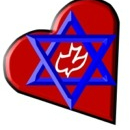In my last post, we examined Yesha’yahu 1:18-31 to learn about The Unfaithful City. In this post, we look at The Mountain of the Lord in Yesha’yahu 2:1-5.
1 This is the word that Yesha’yahu the son of Amotz saw concerning Y’hudah and Yerushalayim:
2 In the acharit-hayamim [the end of days] the mountain of Adonai’s house will be established as the most important mountain. It will be regarded more highly than the other hills, and all the Goyim [Gentiles] will stream there. 3 Many peoples will go and say, “Come, let’s go up to the mountain of Adonai, to the house of the God of Ya‘akov! He will teach us about His ways, and we will walk in His paths.” For out of Tziyon will go forth Torah, the word of Adonai from Yerushalayim. 4 He will judge between the nations and arbitrate for many peoples. Then they will hammer their swords into plow-blades and their spears into pruning-knives; nations will not raise swords at each other, and they will no longer learn war. 5 Descendants of Ya‘akov, come! Let’s live in the light of Adonai! ~ Isaiah 2:1-5 (CJB)
This is one of my favorite passages because of the promise of God revealed by Yesha’yahu. Yesha’yahu looked ahead to the time when God’s righteous kingdom would be established, and the Temple would become the center for the worldwide worship of the Lord. In Yesha’yahu’s day, the Jews were adopting the false gods of the Goyim, but the day would come when the Goyim would abandon their idols and worship the true God of Israel.
Verses 2-4 are virtually identical to that found in Yesha’yahu’s near contemporary, the prophet Mikhah (Micah 4:1-3).
Topographically, Yerushalayim is elevated above its surroundings, so that one always had to climb up to the city. Additionally, the Temple is located on the highest ground in the city, so one goes up to the Temple from other locations in the city. This passage uses these topographical data to proclaim the future political elevation of the city.
The mountain of the Temple is a reference to Tziyon, where the original Temple was built. Tziyon was where God made His presence known especially among His people. Tziyon was not a physically imposing mountain – indeed, the nearby Mount of Olives was considerably taller – but regarding spiritual importance, Tziyon stood above all the other mountains of the world.
The vision anticipates a day when not only Isra’el but all the nations will stream toward this mountain that represents the presence of God on earth. God had promised Avraham that He would bless the nations through his descendants (Genesis 12:1-3). Today, the Kehilah is composed of diverse nationalities, personalities, economic backgrounds, and educational abilities will flow together into the Temple. Lord, help us to continue to be a menagerie, a potpourri of all kinds of different people.
We see that the motivation of going up to the Temple is to learn the way of the Lord. So too, we gather at His Kehilah to learn His ways that we might walk in His paths. The nations seeking the Lord will experience a great transformation. They will not exert their energies and resources to destruction (swords…spears), but rather to productive activities (plow-blades…pruning knives).
Pruning knives are the small knives used to remove leaves and new shoots from the grapevines or thorns from date palms before the harvest. (I still have a couple in my toolbox from my days on my grandfather’s date ranches.)
Finally, we see a beautiful invitation in verse 5 to enjoy the light and love of Adonai. But, before that takes place, there will be a time of chastening, as we will see in verse 6.
In my next post, I will explore The Coming Day of the Lord in Yesha’yahu 2:6-22.

Reblogged this on Talmidimblogging.
LikeLiked by 2 people
There is much in this book of the coming of the Lord. We have been looking at it quite a bit as we finish up our Revelation study. It reminds me of the gospel song, “What a Day That Will Be”.
LikeLiked by 2 people
Praying for that Coming Day in my lifetime.
LikeLiked by 3 people
Me, too, and it could be any day!
LikeLiked by 1 person